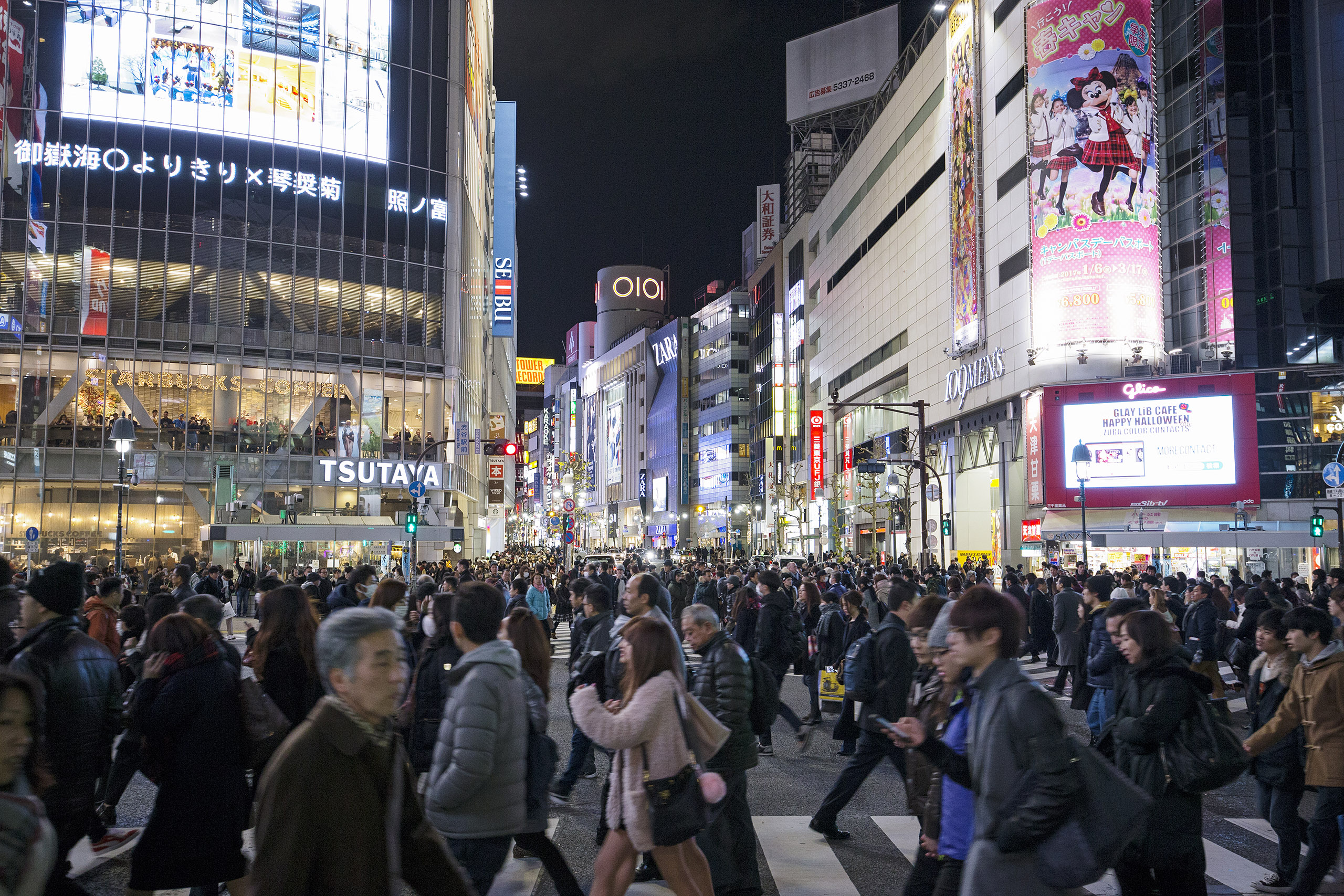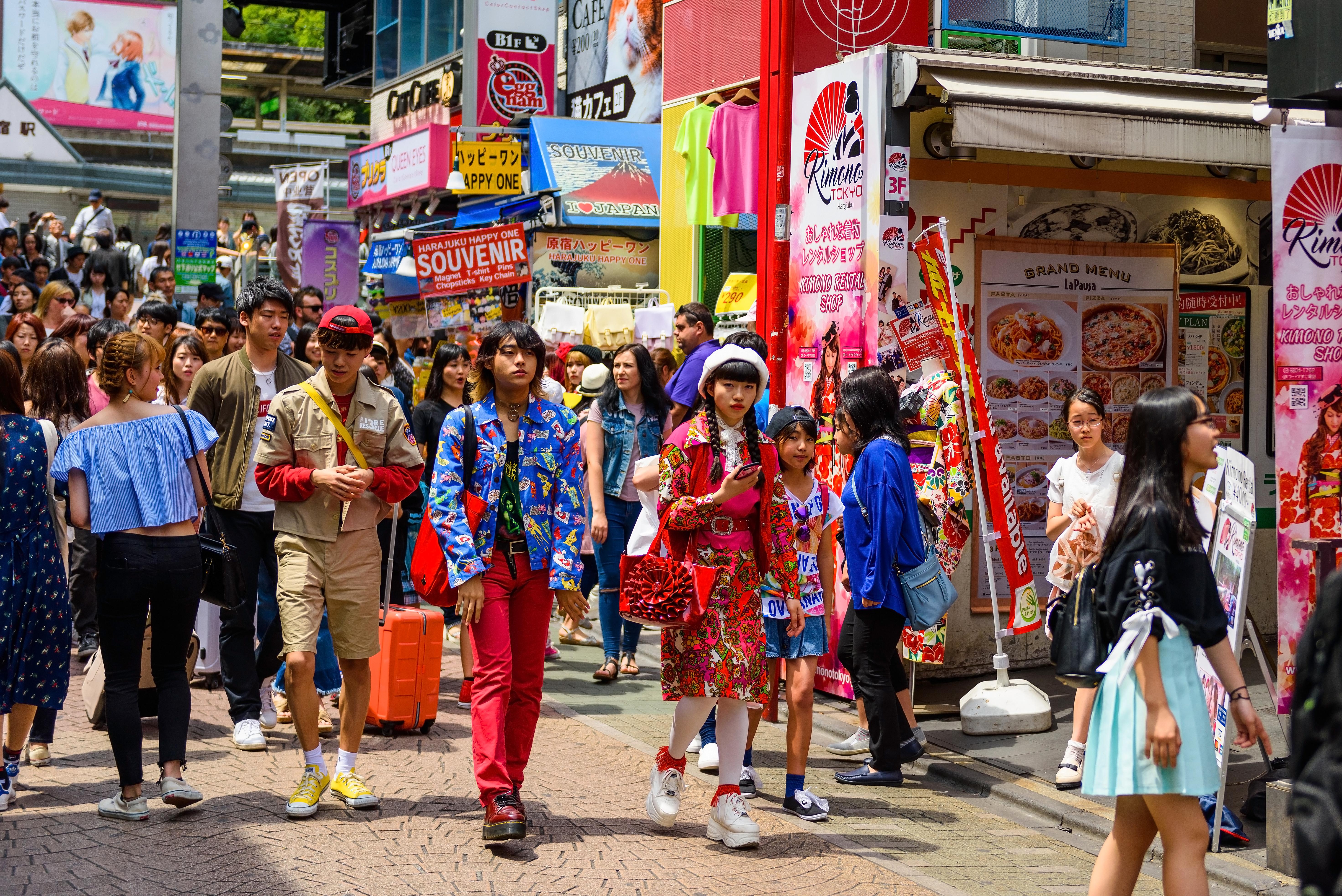
Our lowdown on Japan
There’s something about Japan. There’s no doubt about it. People love Japan like almost no other country, and more and more fall in love with it every passing year.
For many (us included), it’s a love that borders on obsession; an almost religious zeal. But why? What is this strange magnetism that makes a convert of nearly everyone who sets foot in the country? We’ve been asking ourselves the question for over two decades and we still can’t give you a short answer. Japan’s different. It just is.
For many, a love affair with Japan begins early. It might have started with Pokemon cards or anime, strange sweets and trinkets sent by a relative or penpal, or the kid at school who always had a beautiful bento box for lunch. For others, Japan is just another country on the bucket list until they get there, and then — bam — cupid’s arrow strikes.
If you’re in the latter group, it’ll probably start as soon as you get off the plane, as an impeccably dressed member of airport staff bows and hands you a hot towel (or a chilled one in summer). Next, you might be welcomed by a life-sized cartoon mascot (an eel-plane hybrid if you’re arriving into Tokyo; a plane with red cheeks and a captain’s hat if it’s Kansai). They’ll pose for a photo, maybe do a little dance and then wave you on your way. From here, you’ll hop on a spotlessly clean train into the city center, where your journey really begins.
Most people begin their journey in Tokyo
The biggest city in human history (and in our view one of the greatest). It can feel as though you’re bobbing like a cork on a sea of humanity, everyone swept along by an invisible current to apartments, offices, restaurants, shops and who-knows-where-else. Businessmen in suits and teenagers in sky-high heels swarm like ants across Shibuya’s famous “scramble” crossing, while subway conductors use batons to pack commuters into carriages like sardines. Three million people pass through Shinjuku Station each day, making it the busiest in the world. In 2005, a book offering tips on how to get a seat on the Tokyo subway sold thousands of copies and was made into a movie. You get the idea — Tokyo is busy, and you’d better get used to it. It’s part of the experience.

With such an absurd number of people in one place — nearly 40 million and counting! — you might expect the entire project to collapse and descend into chaos, but it doesn’t. Sure, there’s visual chaos: a clashing mess of neon-bright colors, endless advertisements, jam-packed posters fit to make a graphic designer weep. There’s aural chaos, too: jingles that play at every station, advertisements ringing out on repeat over supermarket tannoys and shop staff yelling irrashaimase (welcome!) regardless of whether there are customers to hear them or not. But enveloped by this sensory cacophony, Tokyoites seem perfectly at home. They form polite queues to board subways which always run on time, devour manga while crammed onto rush-hour trains, and navigate crowds with preternatural ease — all without a single hair out of place (we’re convinced there’s no word for “scruffy” in Japanese). It’s like the whole city is engaged in the world’s most complicated dance, and nobody’s ever out of time.
The Japanese treat food as an art form
So much for first impressions — but soon you’ll be getting hungry. The Japanese treat food as an art form (which, in Japan, it is). Poor quality food is illegal here. (It’s not really. The Japanese just aren’t fool enough to put up with it). Whether you’re ordering ramen at an old-fashioned ticket machine at the end of a bar, selecting dishes from an iPad at a conveyor-belt sushi joint, or being tended to by an elegant waitress in a kimono at a high-end kaiseki restaurant, you can bet your bottom yen it’s going to be delicious — and the regional and seasonal diversity is staggering.

In northerly Hokkaido, you should eat Yubari King melons and “Genghis Khan” barbecued lamb. In Kyushu you’ll slurp down Hakata ramen in pork bone stock, in Shikoku you’ll have chewy Sanuki udon, and in Okinawa you’ll have (of all things) Spam and bitter melon stir-fry. Meanwhile, every season there’s a whole new raft of snacks to try – not just delicate, traditional sweets but KitKats, Pocky and Starbucks lattes in flavors like sweet potato, cherry blossom and chestnut. No matter where you are, there’s a huge pride in Japan to eating locally and seasonally, which means you really appreciate those seasonal ingredient when they finally come around! Even the tiniest town is likely to have its local specialty it’s desperate for you to try. And yep, you guessed it: they’re all delicious. Even the Spam.
What’s more, whether it’s a McDonald’s or the Park Hyatt, you’ll be treated with the kind of respect most countries reserve for royalty. For instance, it’s not uncommon for the staff of a shop or restaurant to follow a customer out of the door as they leave and bow them down the road. In Japan, the customer isn’t king — he’s god, and you’d better believe it.
Wild culinary diversity isn’t the only difference you’ll notice when you venture outside of Tokyo.
For a relatively small country (about the size of Germany or California), Japan encompasses a heck of a variety of geographies. This means that, in theory, you could spend the morning spotting sea eagles on the ice floes in the subarctic north, then whoosh down south and be kayaking through a subtropical jungle by the afternoon. Not that we’d ever advocate that. In fact, the slower you travel the better – because it’s the places in between that often end up sticking in your memory.

Nearly three quarters of Japan is rural, full of tiny villages and backroads you won’t find in the guidebooks.
These are among our favorite places to get lost: places where people don't lock their doors, neighbors leave each other home-grown veg, and a foreign tourist is still an event that’ll bring the whole village out. These are the places where the unexpected is bound to happen, so whatever you do, please, please make time for the countryside. Then you can pack in the vast coastal cities and preserved craft towns, steep-sided mountains punctuated by alpine villages, castles perched on high plateaux and age-old temples nestled in thick forests — and everywhere volcanic hot springs bubbling up from beneath your feet.

In many ways, it’s this ever-rumbling seismic underworld that has shaped Japan as we know it — both physically and psychically. Volcanic activity created the country’s most recognizable icon, Mount Fuji, and is responsible for the abundant hot springs the Japanese love so much. But as the 2011 earthquake and tsunami demonstrated, such forces can destroy just as easily as they can create, and you never know when they might strike next. When you think about it, it’s hardly surprising that an appreciation of the power and unpredictability of nature is central to almost every aspect of Japanese culture and philosophy.
What the West understands of Japanese culture, in general, is little more than a series of images: a white-faced geisha, frothy pink cherry blossom, or a many-tiered pagoda.

Underpinning those images, however, is a philosophy deeply rooted in the acceptance of the vicissitudes of life, and of finding aesthetic enjoyment in the simple — even the austere or desolate.
The Japanese have many terms for this kind of aesthetic appreciation: wabi-sabi embraces imperfection and incompleteness; aware (pronounced “ah-wah-ray”) denotes an appreciation of beauty in transience; yugen refers to something too deep and shadow-filled to be seen or understood. All of these words gesture towards a highly self-conscious and melancholy appreciation of a beauty that can’t last, exemplified by the fleeting cherry blossom each spring.

It’s the kind of beauty to be found in the grain of a piece of wood, in the placement of a flower in ikebana, in the swallowtail make-up at the base of a geisha’s neck, or even the shadow cast in an alcove (as famously discussed in Junichiro Tanizaki’s essay In Praise of Shadows). It’s present in the austere lives of sumo wrestlers and the discipline of the sushi master; in the repaired crack in a kintsugi pot and the brevity of a haiku poem. It’s why the most exclusive ryokan room is usually devoid of all but the sparest of decoration, and why tea ceremony is performed in an empty tatami-mat room with the simplest of cups and teapot. Some scholars (both Japanese and Western) have suggested that Japan is the only nation ever to have aetheticised their entire way of life — a feat achieved in the pressure cooker of its 200-year isolation, before America rocked up in 1853. It was during this period when, cut off from the outside world, the ingredients of Japanese culture coalesced, fuzed, and matured into the unique cultural flavor we recognize today.
On the face of it, modern Japan — and particularly urban Japan — might seem like an affront to these traditional ideas.
Anyone who’s ever experienced the neon lights of Shinjuku and shops and cafes of Harajuku will know that it’s as far from wabi-sabi as can possibly be imagined. On Takeshita Street, teens dressed like Victorian dolls festoon themselves with flounces, bows and cuddly toys, while in Akihabara whole buildings glow with garish branding and advertisements in luminous colors. In this post-bubble world of manga, anime, kawaii and J-Pop, “more is more” is the new philosophy, and the rest of the world can’t get enough of it.

For many, it’s this very collision of tradition with modernity that is part of Japan’s appeal. There’s something undeniably compelling about the fact that you can find a kid dressed as an anime character walking down the same street as a woman in an elegant kimono, or displays of plastic ice creams next-door to a Michelin-starred sushi restaurant. But for us, what makes Japan special is more complicated than old-meets-new — more ineffable than the fact that the food is amazing, the trains run on time, and there’s always a clean public toilet within a couple of minutes’ walk. None of this is what keeps us coming back again and again, and will keep us coming back for the rest of our lives.
What keeps us coming back is that Japan just never stops surprising us.
Even the most ordinary thing can be strange and different, from those infamous all-singing, all-dancing toilets to the vending machines that dispense everything from champagne to hot, canned soup. It’s a country where they have hotels entirely staffed by robots, and yet every office still has (and uses) a fax machine. It doesn’t make any sense. You’ll never figure it out — and it’s the people who will surprise you most of all.

The Japanese are often stereotyped as polite, hard-working and reserved, but what you don’t hear is that they’re also spontaneous, silly, and so excited to show off their country to visitors. Like the old man who escorts you home with an umbrella in a downpour, then leaves you with no more than an onigiri rice ball and an “elementary, my dear Watson”. Or the monk chanting sutras over the sound system at the end of a karaoke party. It’s the old sumo wrestler who regales you with stories of his fighting days over chanko nabe hotpot, and the young couple who take you along on their romantic day of sightseeing on Mount Aso. Every day in Japan is another opportunity for something unexpected and wonderful to happen, and we guarantee that it will.
